Homemade Brownies: When are They Done?
Who doesn’t love a good brownie? Fudgy, deeply chocolatey, with those tasty edge pieces…they are a culinary exclamation point in any kitchen. If you make them at home, they’re even better: you can control the ingredients and texture, not to mention the doneness. Brownies are almost always super moist, but that can make it hard to tell when they’re done properly. Here, we’ll give you the critical temperatures, plus a killer recipe from SmittenKitchen, to help get you to brownie paradise.
Get the tools for this recipe here:
What’s the difference between brownies and cake?
Taxonomically, one would probably classify brownies as cake, though a very particular subspecies of the genus. They are, after all, desserts baked in a pan from a sweetened batter. But we would seldom just call brownies “cake.” The chief difference between brownies and cake is texture. Cake is light and fluffy while brownies are dense and chewy. Though there are exceptions, most brownies don’t have any baking powder in them. The lack of leavening causes results in a chewy, dense bar. Contrary to folklore, brownies were almost certainly not the result of a culinary accident wherein a chocolate cake was baked sans baking powder. (It is odd how many culinary origin stories ascribe the creation of a favorite food to accident as if fate itself required the creation of this or that baked good or sandwich or sauce.)
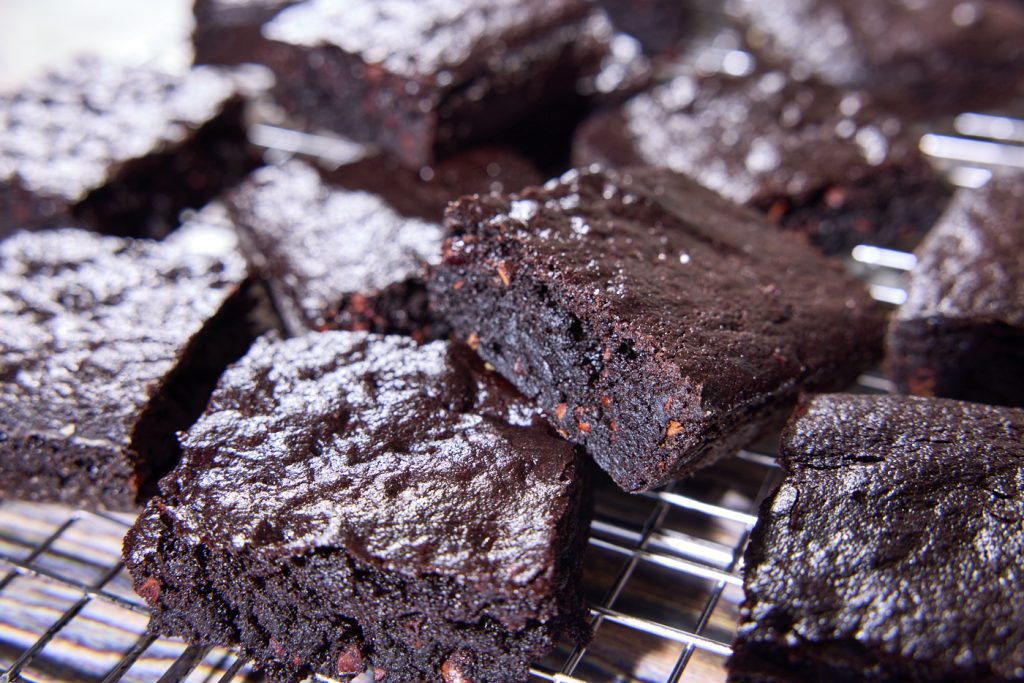
In fact, the first recorded recipe for brownies that anyone has found occurs in The Boston Cooking School Cook Book, published in 1896. Those brownies were molasses flavored and recipes evolved from there, with the eventual inclusion of chocolate, though molasses-y brownies continued to be printed in recipe books through the late 1920’s. The name “brownies” may have come from the color of the cakes themselves but it is possible they were named for the elfin characters in a then-popular children’s book created by Palmer Cox.
Brownie doneness: moist, even gooey, but not underdone
So we have a dense cake (generally) without leavening. How do we know when it’s done? Popular wisdom says to use a cake tester or toothpick to prick the bake and see if it comes out clean. But there are two problems with that method.
First, and most important, the cake-tester method can tell you if a pan of brownies is done, but it will give the same “reading” for brownies that are overdone. Not ideal. Second, and somewhat dependent on recipe, it may not tell you if the brownies are done at all. Some brownies can read as gooey enough to stick to a toothpick but actually be done enough to set up to the right temperature. That problem is exacerbated by the presence of chocolate chips or chunks in your recipe.
Instead of using those inexact methods of testing, use a thermometer! A fast, accurate thermometer like Thermapen ONE will tell you the actual doneness of your brownies every time, without any guesswork. And though it varies a little from recipe to recipe, a good place to start with your brownie doneness is 200°F (93°C). A quick check in the center of your pan of brownies will tell you exactly how they’ll set up when cool.
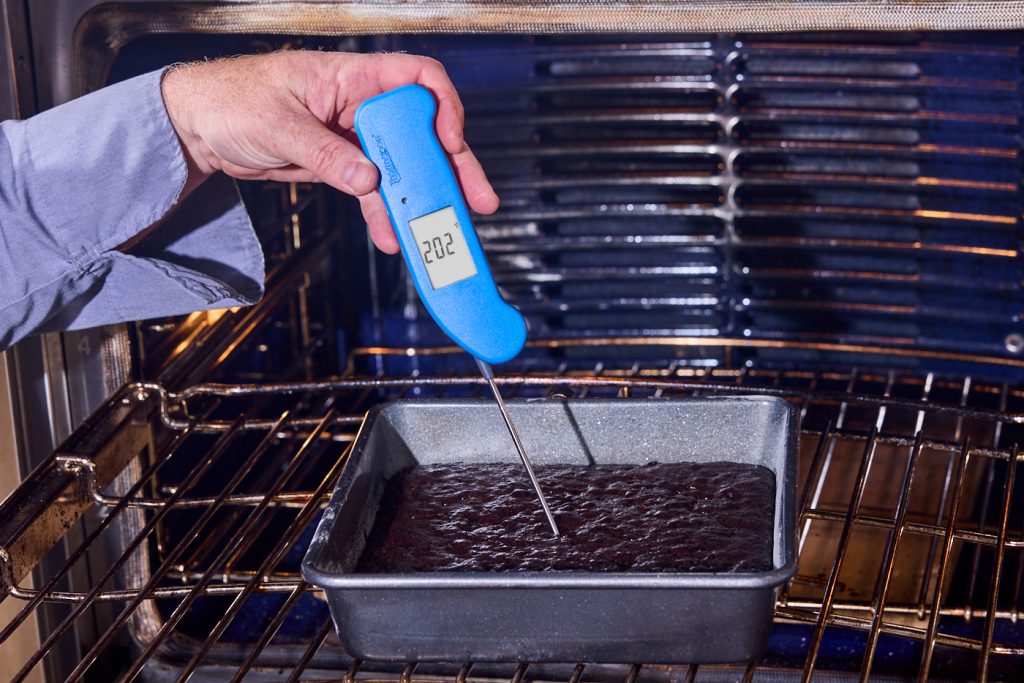
Critical temps for brownie cooking
The recipe we use here starts with melting a bunch of ingredients together in a double boiler. This accomplishes two things: it ensures smoothness and homogeneity (this recipe uses cocoa powder, not melted chocolate, and a clump of unincorporated cocoa is no one’s friend), and it gives the brownie batter a bit of a temperature boost to get through the bake more quickly.
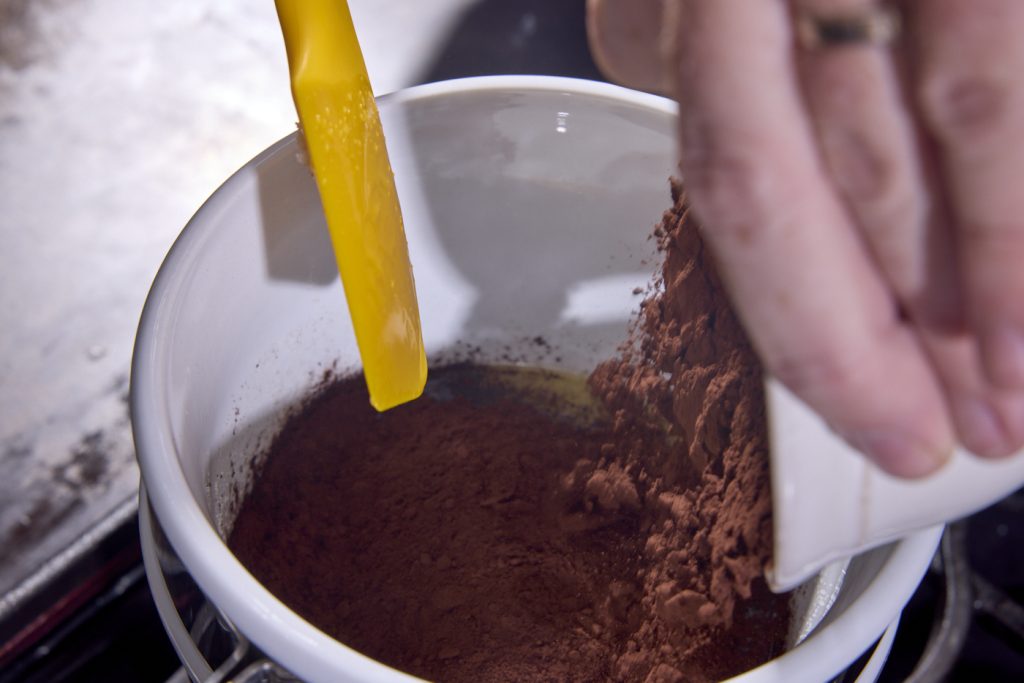
When combining the ingredients, use your Thermapen to keep an eye on the temperature. You want the mixture to get up to somewhere between 110 and 125°F (43 and 51°C). We don’t want the mixture to be much hotter or we risk scrambling the eggs when we add them off the heat. This step seems odd, but it affects the final texture of the brownies. Creaming the butter and sugar together would incorporate more air into the batter, making the final brownie lighter and cakier, which is not what we’re going for in this case!
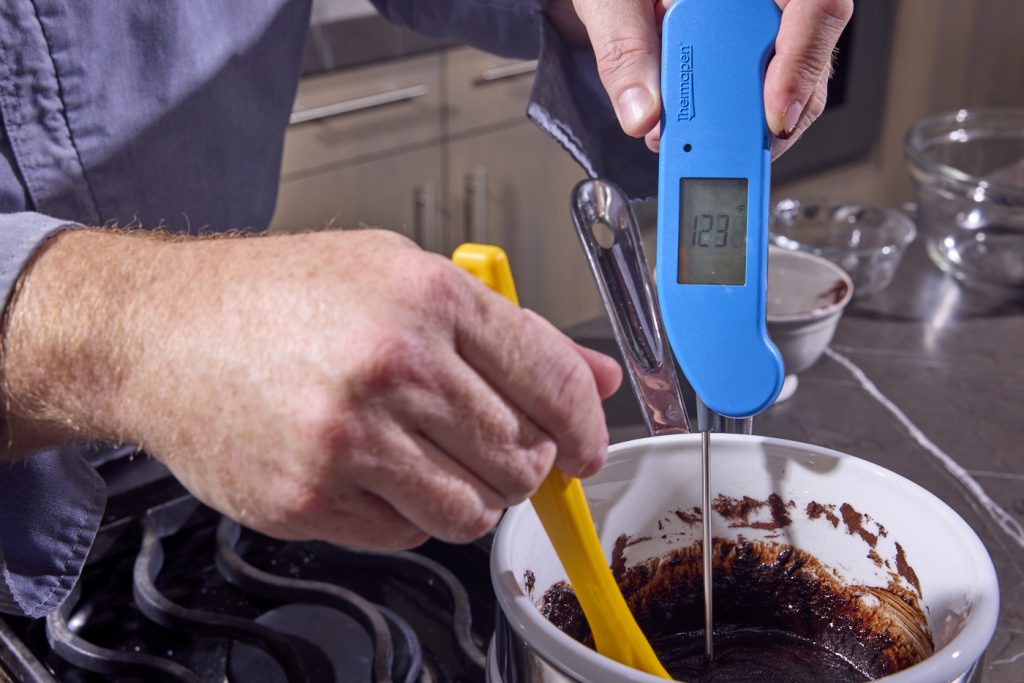
Nuts or no?
Some people like nuts in their brownies, some people think they’re an abomination. how you like yours is up to you, but we’d like to offer a nice midground: Cacao nibs. Cacao nibs are the crunchy bits that result from roasting cacao beans, the raw ingredient in chocolate. They have a nutty, toasty crunch that blends seamlessly with rich dark brownies while eliminating the sort-of-soggy feeling of chopped walnuts. Give them a try, we think you’ll love it.
Conclusion
Brownies are one of the joys of the home kitchen. But a cakey-light brownie is not as nice as a dense, chewy, fudgy, dark-as-night brownie. But a brownie like that, maybe one that has only enough flour to hold the chocolate, sugar, and eggs together, like the one below, can be hard to gauge on doneness. Use your Thermapen ONE to get perfect brownies every time. Try this recipe or use your favorite, but either way, write down the perfect doneness temperature for your favorite brownie in the recipe. Then you and everyone after you can enjoy the happiest cooking.
Print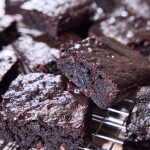
Homemade Brownies: When are They Done?
Description
Amazing dark, rich brownies, adapted from a recipe at SmittenKitchen.com.
Ingredients
- 10 Tbsp unsalted butter
- 1 1/4 C granulated sugar
- 3/4 C plus 2 Tbsp unsweetened cocoa powder (natural or Dutch-process)
- 1/4 tsp salt (Morton’s kosher)
- 1/2 tsp pure vanilla extract
- 2 large eggs, cold
- 1/2 C (65 grams) all-purpose flour, plus more for dusting
- 1/3 C cacao nibs, optional
Instructions
- Start preheating your oven to 325°F (163°C) and prepare a 9″ x 9″pan by greasing it and coating it with a light dusting of flour.
- Make a double boiler by putting an inch or so of water in a pot and fitting another pot or bowl into the mouth of that pot. Bring the water in the bottom pot up to a high simmer.
- In the double boiler, melt the butter. When it is nearly all melted, add the sugar and cocoa powder. Stir to combine and continue stirring, monitoring the temperature with your Thermapen ONE, until the mixture is glossy, smooth, and somewhere between 110 and 125°F (43 and 52°C).
- Remove the bowl from the boiler. If your bowl has a lot of heat retention, transfer the mixture to another bowl.
- Beat in the eggs, one at a time, beating until the mixture is shiny. Add the vanilla.
- Stir in the flour until you can no longer see it. Add the cacao nibs, if using.
- Transfer the batter to your prepared pan and bake for 20-35 minutes.
- Start checking the internal temperature with your Thermapen ONE at 20 minutes and adjust the time accordingly.
- When the internal temperature is not below 200°F (93°C), remove the brownies from the oven. They will seem very gooey and sort of underdone in the center!
- Allow the brownies to cool, then cut and serve them to wild acclaim.


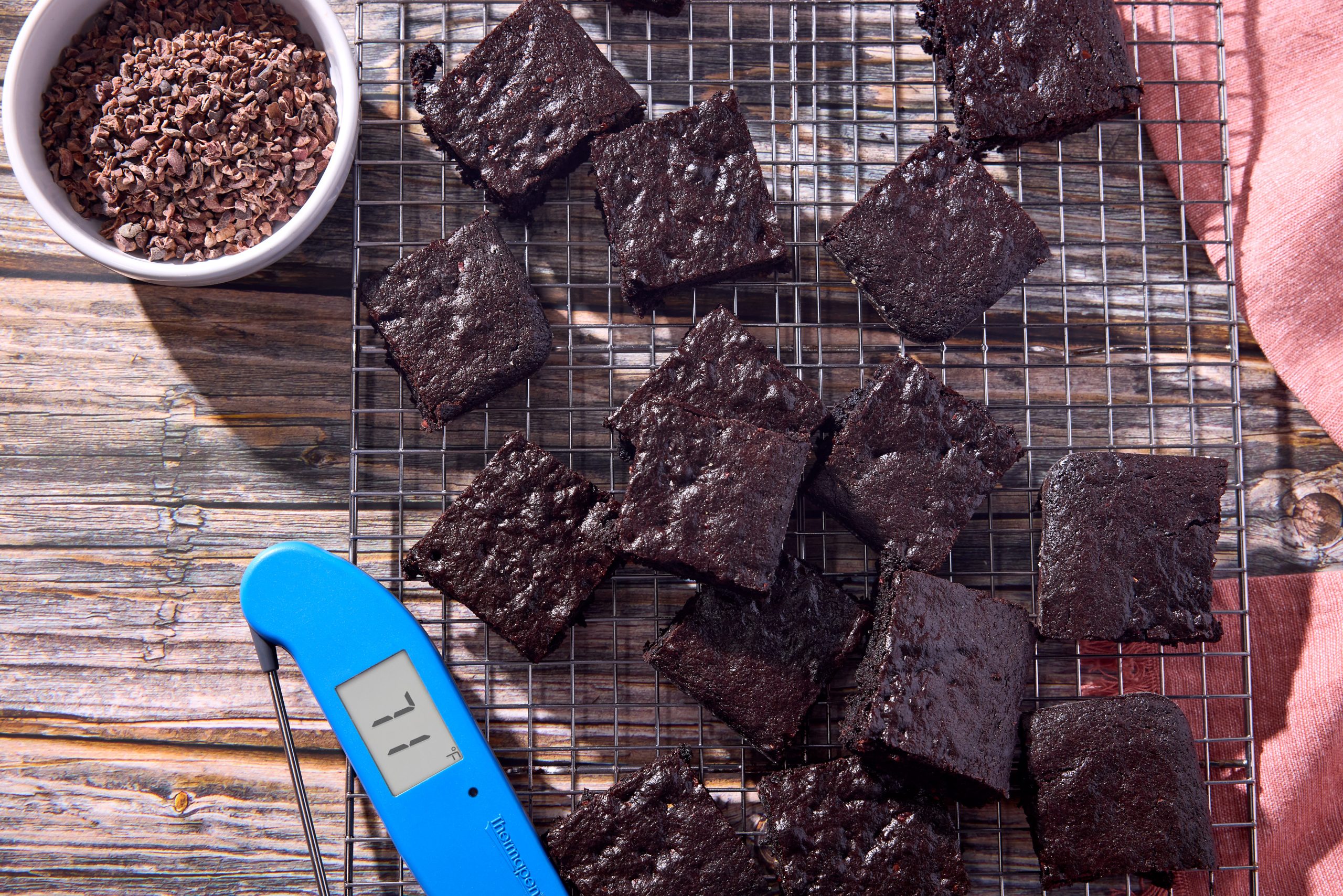
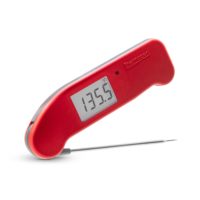
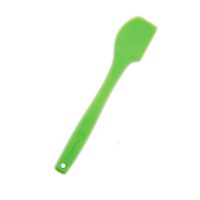
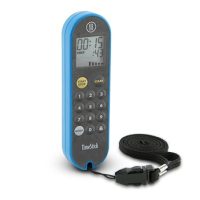
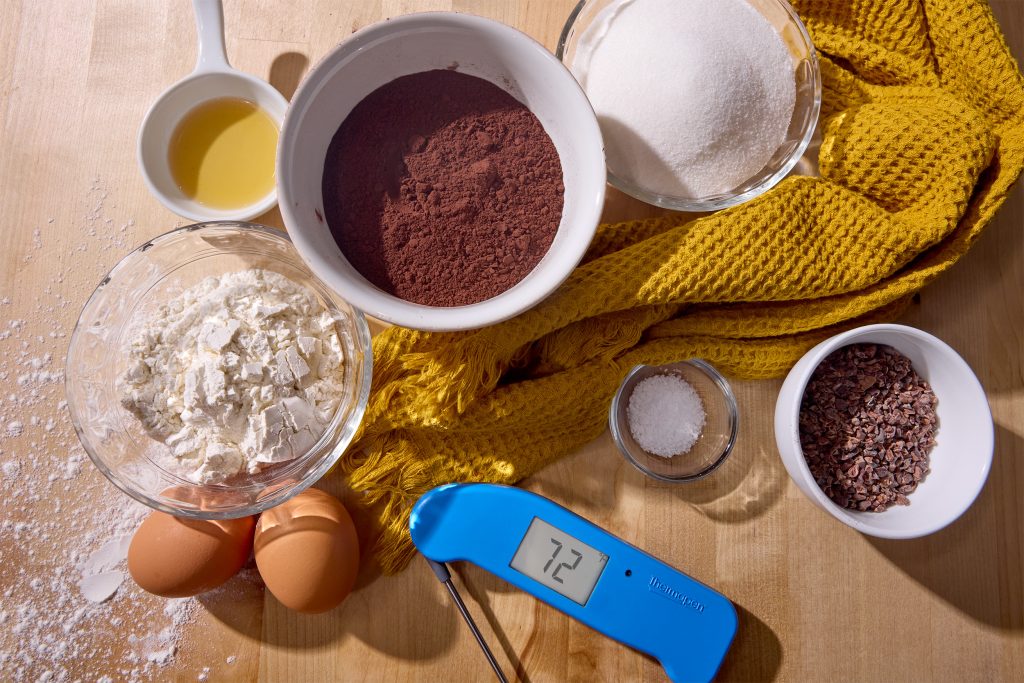
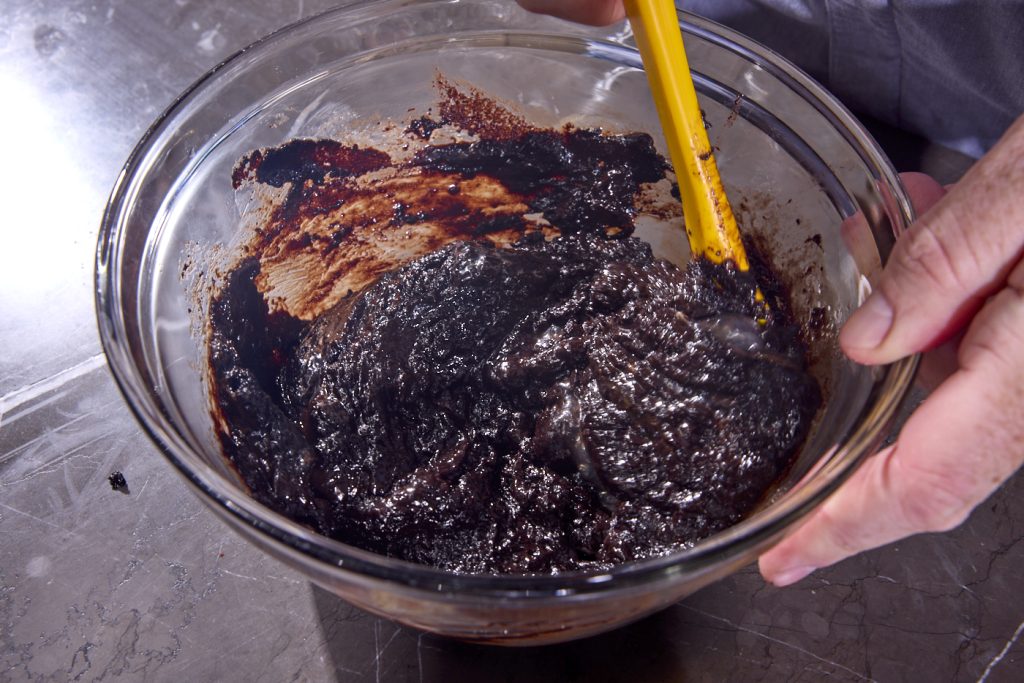
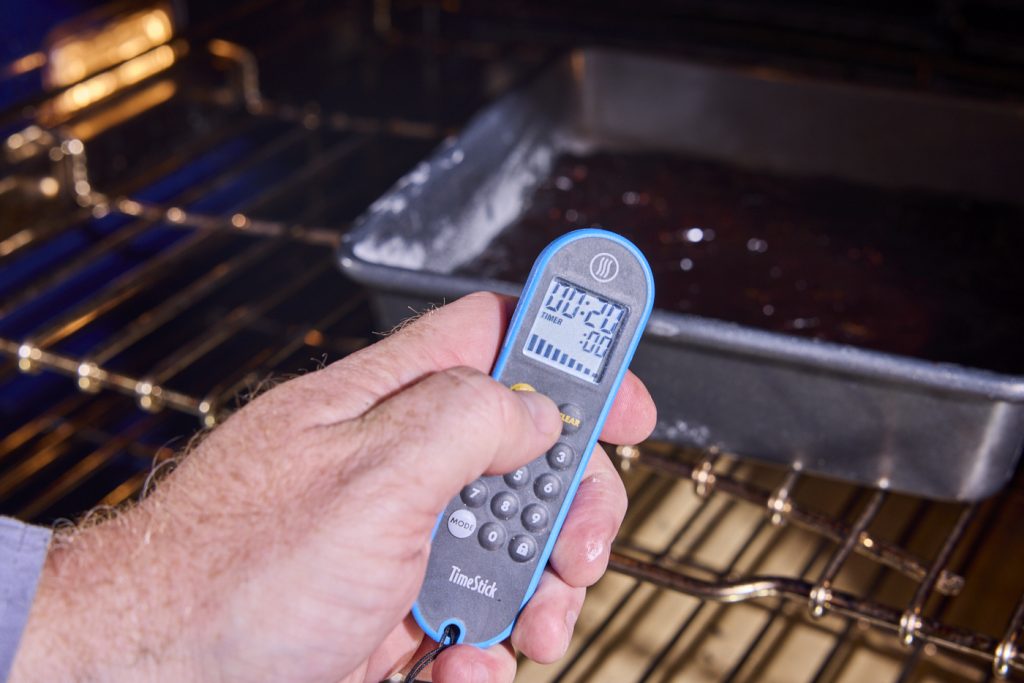
What a hidden treasure the cacao nibs are. Incredible recipe – this reminds me of a much better take on the brownies in Ben and Jerry’s ice cream. Thank you for sharing.